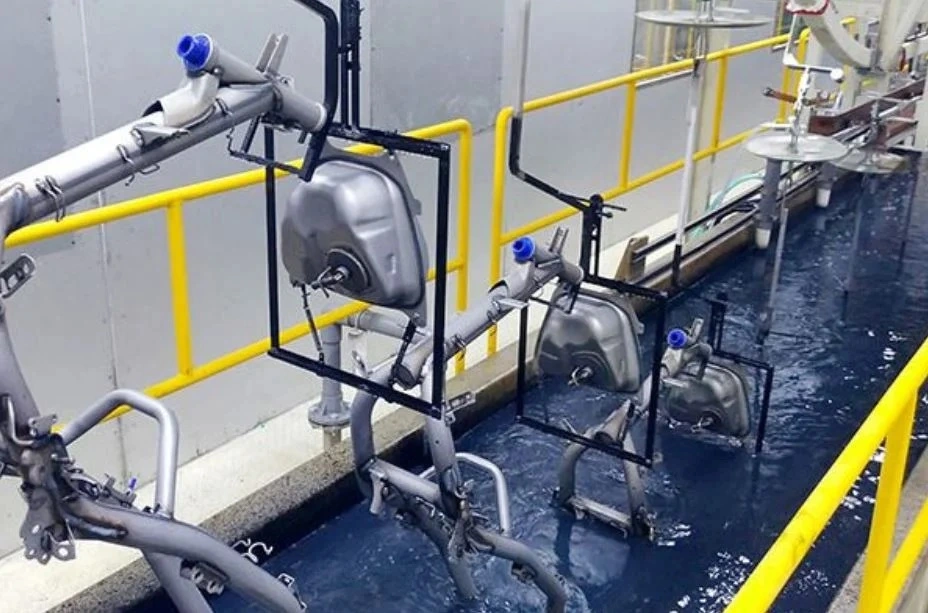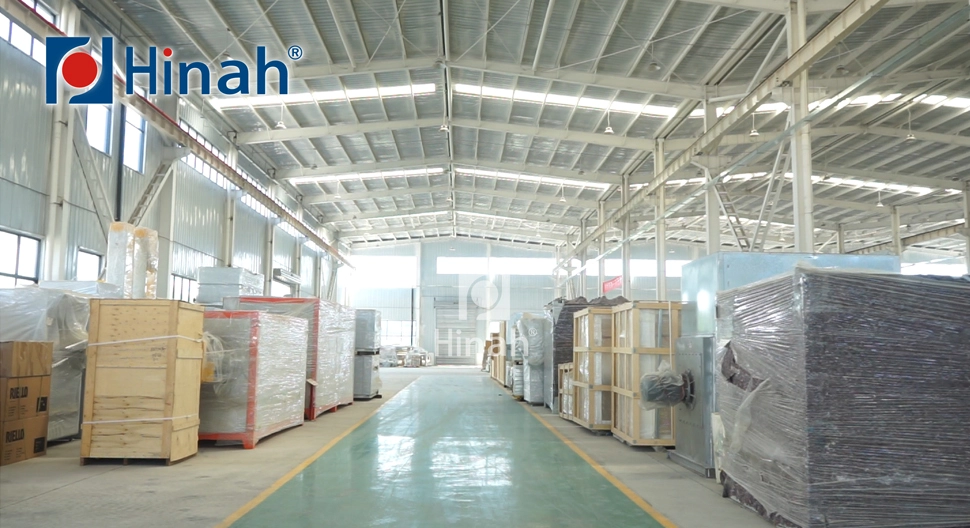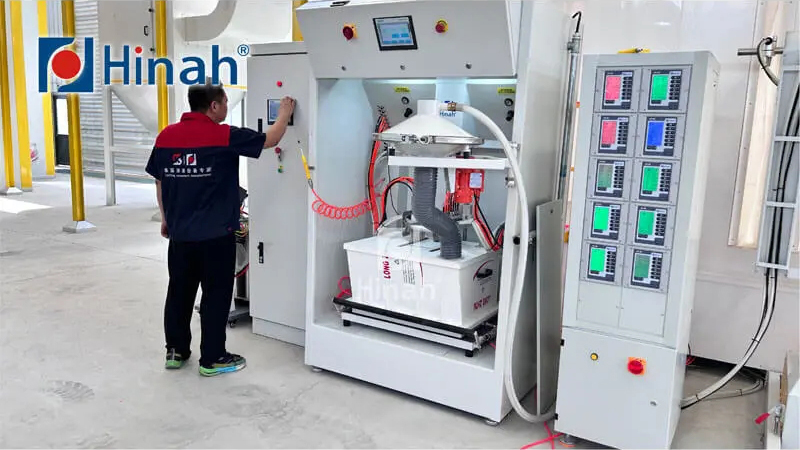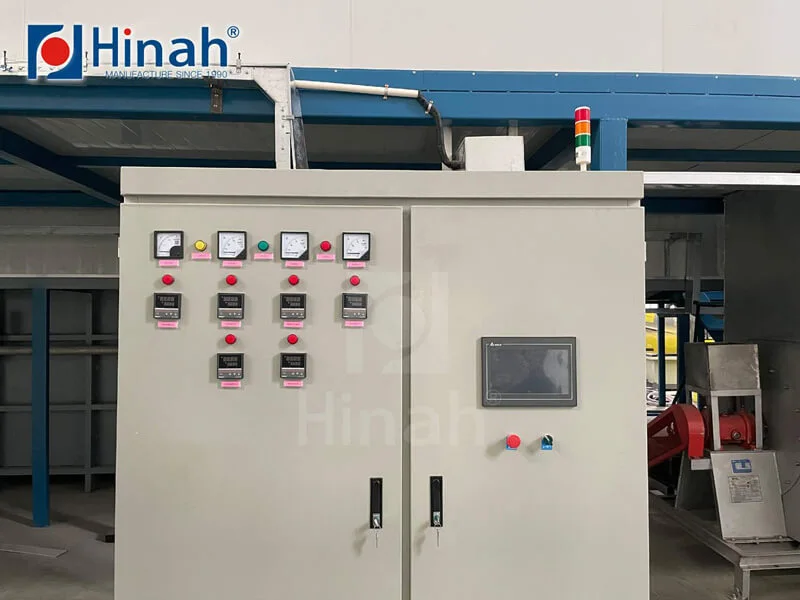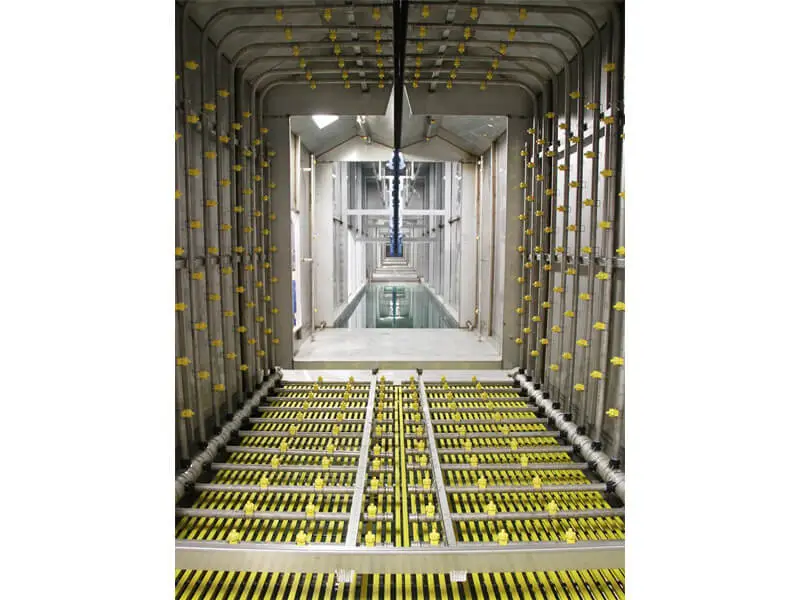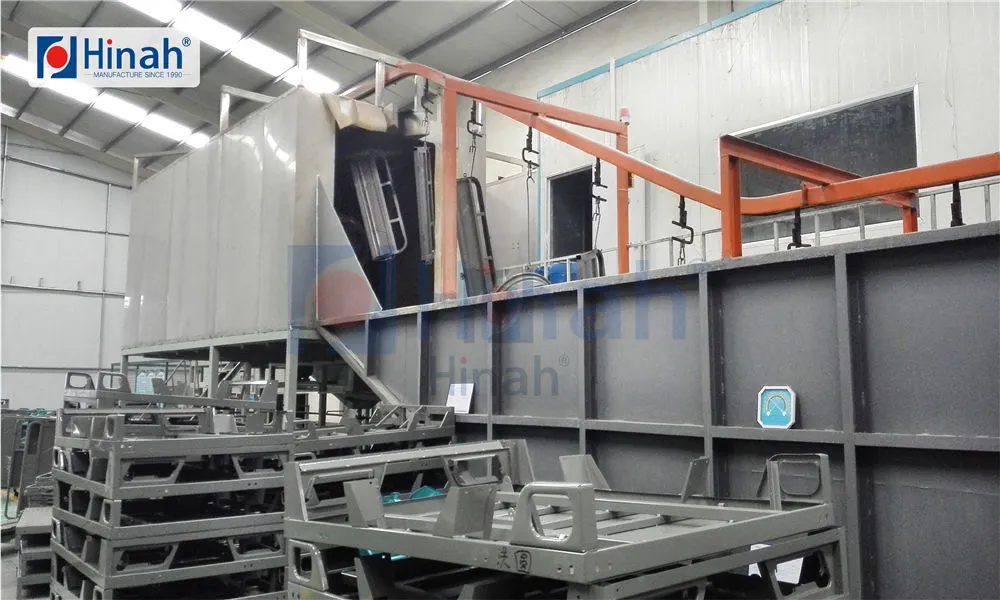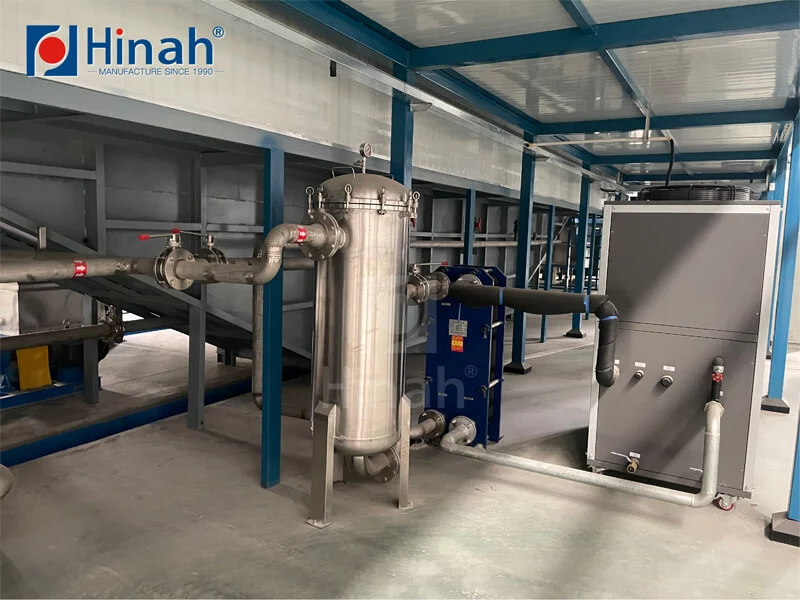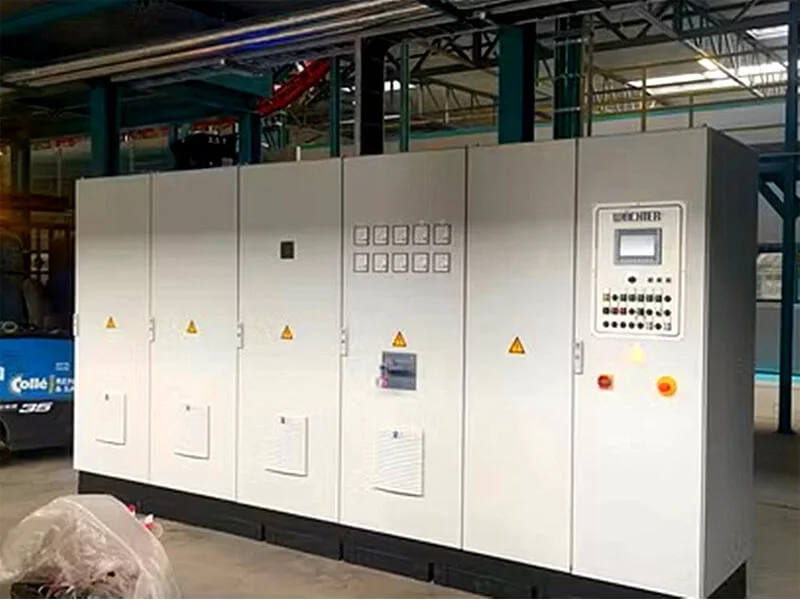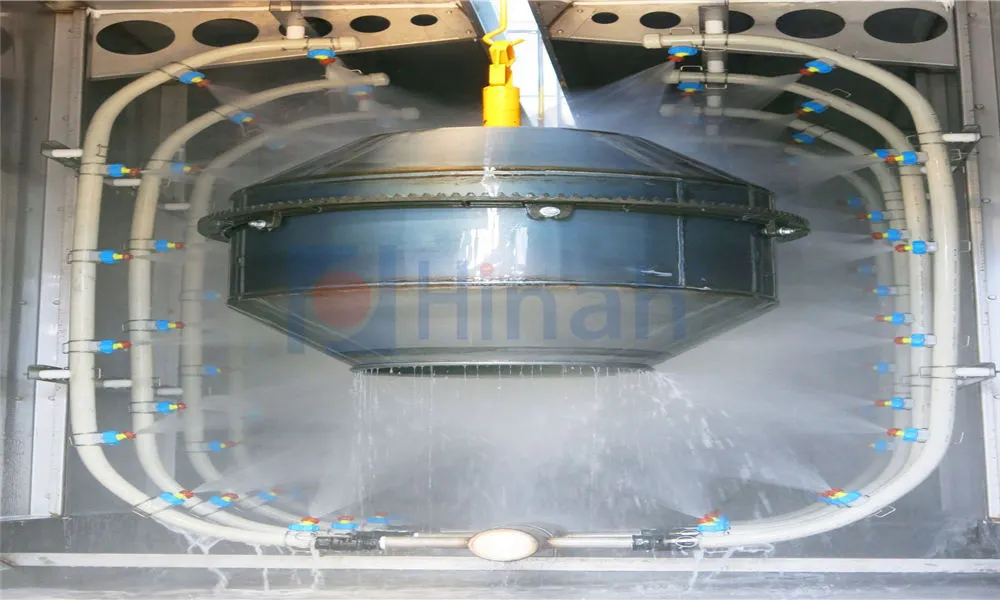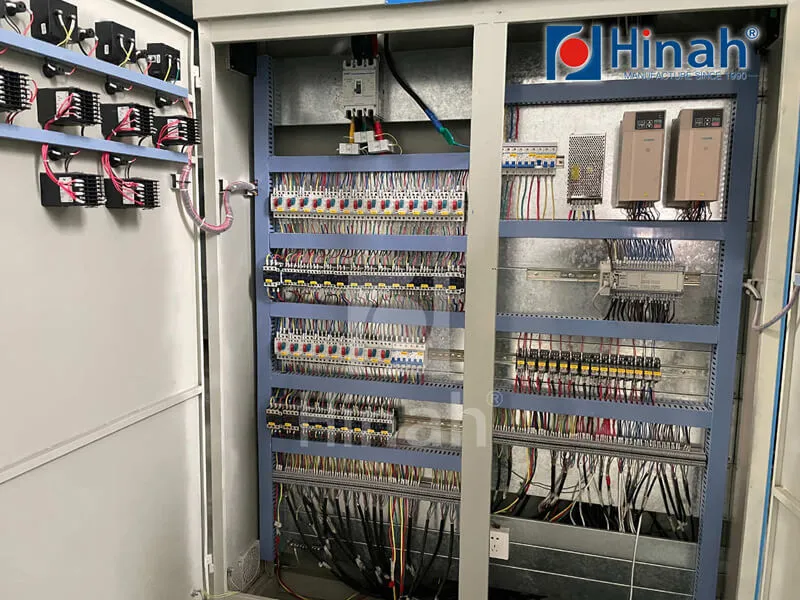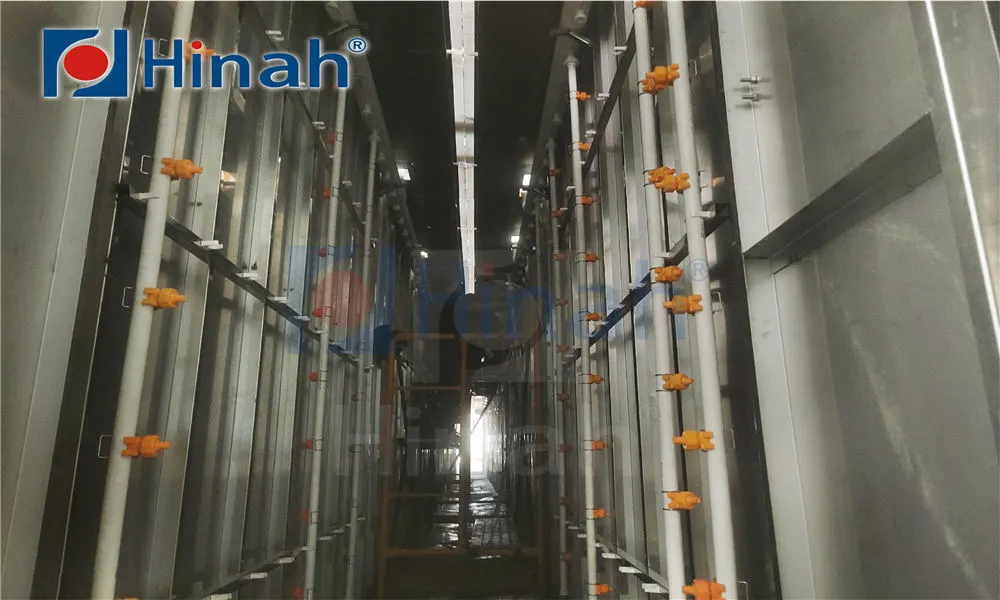In today's competitive manufacturing landscape, efficiency and quality are paramount. One critical component that drives success in surface finishing is the powder coating conveyor. This system not only streamlines production but also ensures consistent, high-quality results across various industries. At HANNA, we specialize in designing and implementing robust powder coating conveyor solutions that cater to diverse operational needs. In this article, we delve into the technology and processes behind these systems, highlighting how they enhance productivity and durability. Whether you're in automotive, furniture, or aerospace, understanding the intricacies of powder coating conveyors can transform your coating operations.
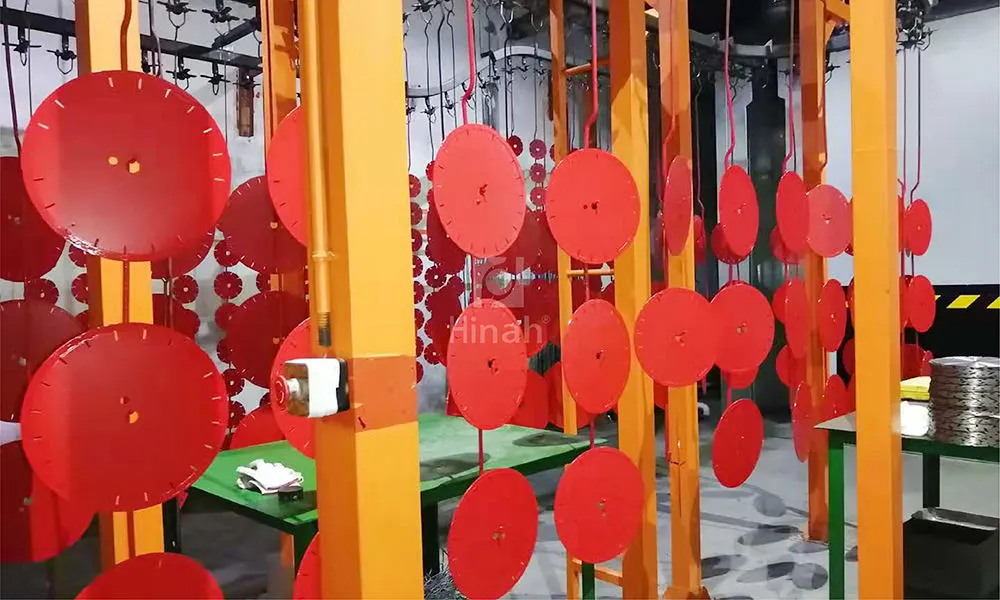
Understanding the Basics of Powder Coating Conveyors
A powder coating conveyor is an integral part of the powder coating process, designed to transport items through various stages—from pre-treatment and coating application to curing and cooling. Unlike traditional liquid coatings, powder coating involves applying a dry, electrostatically charged powder to a surface, which is then heated to form a durable finish. The conveyor system ensures that parts move smoothly and consistently through each phase, minimizing human error and maximizing throughput. At HANNA, our powder coating conveyor systems are engineered to handle different load capacities and environmental conditions, making them versatile for small workshops to large-scale industrial plants. By automating the movement of components, these conveyors reduce labor costs and enhance safety, while maintaining a uniform coating thickness.
How Powder Coating Conveyors Operate: A Step-by-Step Process
The operation of a powder coating conveyor begins with loading parts onto the system, typically via an overhead or floor-level setup. As items enter the pre-treatment area, they undergo cleaning and preparation to remove contaminants, ensuring optimal adhesion. The conveyor then moves them into the coating booth, where electrostatic guns apply the powder evenly. Thanks to the precise control offered by modern powder coating conveyor systems, overspray is minimized, and material waste is reduced. After application, the conveyor transports the coated parts through a curing oven, where heat triggers a chemical reaction that bonds the powder into a smooth, hard layer. Finally, the items cool down before being unloaded. HANNA's powder coating conveyor designs incorporate variable speed controls and intelligent monitoring, allowing operators to adjust parameters in real-time for different materials and geometries. This seamless integration of stages ensures that every component receives a flawless finish, boosting overall efficiency.
Key Types of Powder Coating Conveyors and Their Applications
Powder coating conveyors come in several configurations, each suited to specific operational requirements. Overhead conveyors are among the most common, using a continuous chain to suspend parts from an elevated track. This type is ideal for heavy or irregularly shaped items, as it maximizes floor space and facilitates easy access to all surfaces during coating. Another popular variant is the belt conveyor, which is excellent for flat or small components that require stable support. For high-volume production, monorail systems offer flexibility and rapid transit between stations. HANNA provides customized powder coating conveyor solutions that can integrate with existing infrastructure, whether it's a compact inline system for electronics or a robust network for automotive frames. By selecting the right type, businesses can achieve higher throughput and reduce cycle times, ultimately lowering operational costs.

Advantages of Integrating Powder Coating Conveyors in Your Workflow
Implementing a powder coating conveyor system brings numerous benefits, starting with enhanced productivity. By automating material handling, these systems enable continuous operation, reducing downtime and increasing output. Consistency is another major advantage; a well-designed powder coating conveyor ensures that each part undergoes identical treatment, leading to uniform coating quality and fewer rejects. Additionally, powder coating conveyors promote environmental sustainability by capturing and reusing overspray powder, unlike solvent-based alternatives that emit volatile organic compounds. HANNA's powder coating conveyor models are built with energy-efficient components, such as low-friction drives and heat recovery systems, which cut energy consumption and operational expenses. Moreover, safety improvements are notable, as automated conveyors minimize worker exposure to hazardous chemicals and high-temperature zones. Overall, investing in a reliable powder coating conveyor can yield significant returns through improved efficiency, cost savings, and superior product durability.
HANNA's Innovative Approach to Powder Coating Conveyor Solutions
At HANNA, we pride ourselves on delivering cutting-edge powder coating conveyor systems that address modern industrial challenges. Our team collaborates closely with clients to assess their unique needs, from throughput targets to space constraints. We incorporate advanced features like IoT sensors and predictive maintenance algorithms into our powder coating conveyor designs, enabling proactive issue resolution and extended equipment life. For instance, our flagship HANNA-Pro series includes modular conveyor components that can be easily reconfigured for evolving production lines. By focusing on durability and user-friendliness, we ensure that our powder coating conveyors withstand harsh conditions while requiring minimal upkeep. Case studies from clients in the metal fabrication sector show that HANNA's powder coating conveyor installations have boosted efficiency by up to 30%, thanks to optimized speed settings and reduced manual interventions. Through continuous research and development, we stay at the forefront of powder coating conveyor technology, offering solutions that blend reliability with innovation.
Maintenance and Best Practices for Powder Coating Conveyors
To maximize the lifespan and performance of a powder coating conveyor, regular maintenance is essential. Start with daily inspections of moving parts, such as chains and bearings, to detect wear early. Lubrication should be performed according to the manufacturer's guidelines to prevent friction-related breakdowns. In powder coating conveyor systems, keeping the tracks and rollers clean from accumulated powder debris is crucial to avoid jams and contamination. HANNA recommends scheduling professional servicing every six months to check electrical components and alignment. Additionally, train operators on proper loading techniques to prevent overloading, which can strain the conveyor mechanism. By adhering to these practices, businesses can minimize unplanned downtime and maintain consistent coating quality. Implementing a preventive maintenance plan for your powder coating conveyor not only extends its service life but also safeguards your investment in the long run.
Future Trends in Powder Coating Conveyor Technology
The evolution of powder coating conveyors is leaning toward smarter, more sustainable solutions. Industry 4.0 initiatives are driving the adoption of AI-driven analytics in powder coating conveyor systems, allowing for real-time optimization and fault detection. For example, HANNA is exploring integration with digital twins, where virtual models simulate conveyor performance to predict bottlenecks. Another trend is the rise of energy-efficient designs, such as regenerative drives that recycle braking energy in overhead conveyors. As environmental regulations tighten, powder coating conveyors that support water-free pre-treatment and low-emission curing are gaining traction. HANNA's R&D team is also working on lightweight, composite materials for conveyor components to reduce energy consumption without compromising strength. By staying ahead of these trends, companies can future-proof their operations and leverage powder coating conveyor advancements for competitive advantage.
Frequently Asked Questions About Powder Coating Conveyors
Q1: What is the typical lifespan of a powder coating conveyor system?
A1: The lifespan of a powder coating conveyor varies based on usage and maintenance, but with proper care, HANNA's systems can last 10–15 years. Regular inspections and timely part replacements help extend durability.
Q2: How does a powder coating conveyor improve coating uniformity?
A2: A powder coating conveyor ensures consistent speed and positioning through each stage, reducing human error. This leads to even powder application and curing, resulting in a uniform finish across all parts.
Q3: Can powder coating conveyors handle heavy or oversized items?
A3: Yes, especially overhead conveyors designed by HANNA, which can support heavy loads up to several tons. Custom configurations allow for tailored solutions to handle large or irregularly shaped components.
Q4: What safety features are integrated into modern powder coating conveyors?
A4: Modern powder coating conveyors include emergency stops, overload protection, and enclosed moving parts to prevent accidents. HANNA's models also feature smoke detection and automatic shutdown in curing ovens for enhanced safety.
Q5: How do I choose the right powder coating conveyor for my facility?
A5: Consider factors like production volume, part size, and available space. HANNA offers consultations to assess your needs and recommend a powder coating conveyor that optimizes efficiency and fits your budget.
In summary, a well-designed powder coating conveyor is pivotal for achieving efficient, high-quality surface finishing. By partnering with HANNA, businesses can leverage expert solutions that enhance productivity and sustainability. If you're looking to upgrade your coating line, explore our range of powder coating conveyor systems tailored to meet industrial demands.


